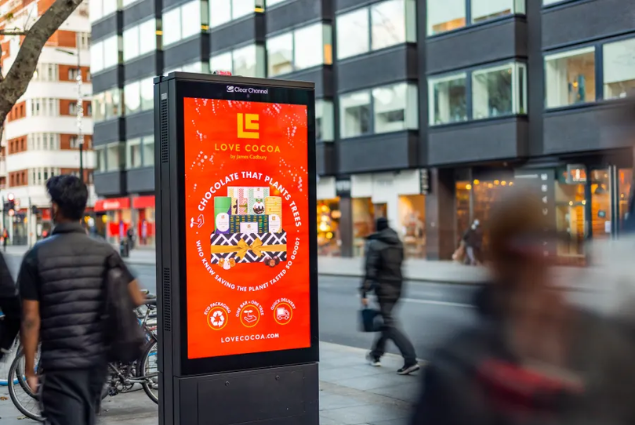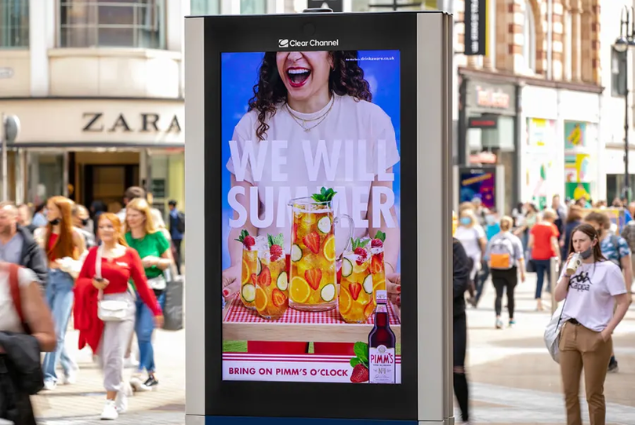In the era of data-driven marketing, location data has emerged as a valuable resource for advertisers. Particularly in the field of Digital Out-of-Home (DOOH) advertising, location data can significantly enhance the effectiveness of campaigns. This article explores how location data can be leveraged in digital outdoor advertising, from tailoring messages to local audiences to integrating with mobile marketing efforts.
Speak to your audience
One of the primary benefits of leveraging location data in DOOH advertising is the ability to tailor messages to local audiences. By understanding the specific demographics and consumer behaviors of a location, marketers can create highly relevant and personalized ads.
Location data can provide insights into the lifestyle, interests, and needs of people in a specific area. By utilizing this data, marketers can design messages that resonate with the local audience, increasing the likelihood of engagement and conversion.
A great example of this is Spotify’s global outdoor ad campaign, where they used location data and listening data to create area-specific billboards. In one memorable ad, they used the message: “Dear person in the Theater District who listened to the Hamilton Soundtrack 5,376 times this year, can you get us tickets?”. This use of localized messaging not only showcased Spotify’s understanding of its users’ habits but also its ability to create a personal and engaging ad.
Time and traffic-based targeting
The power of DOOH advertising is not just about reaching the right people but also about reaching them at the right time. By analyzing traffic patterns in combination with location data, advertisers can target their ads based on when they’re most likely to be seen by their desired audience.
Analyzing traffic data can reveal high-traffic times and routes, which can inform when and where to display ads for maximum visibility. Additionally, this data can reveal insights into the daily routines of people in a location, enabling advertisers to display specific messages at the times they’re most relevant.
Case studies
For example, a coffee brand might choose to display their ads on digital billboards along busy commuting routes during the morning rush hour, catching the attention of drivers who might be tempted by a cup of coffee on their way to work.
Similarly, a restaurant could advertise their dinner specials on screens in nearby shopping centers in the late afternoon, just as shoppers are starting to think about dinner.

Integration with mobile marketing
With smartphones being a constant companion for most people, integrating DOOH with mobile marketing strategies presents an exciting opportunity. By leveraging location data, marketers can coordinate their outdoor ads with their mobile campaigns, providing a seamless experience for consumers.
Location data can enable marketers to send mobile ads or push notifications to consumers when they’re near a digital billboard. This can reinforce the message on the billboard or provide a direct call to action, such as downloading an app or visiting a website.
A particularly effective use of this strategy was implemented by a leading fast-food chain. They used location data to identify when a customer was near a rival restaurant and displayed a DOOH ad offering a discount at their own restaurant while simultaneously sending a mobile coupon to the customer’s phone. This not only caught the customer’s attention but also provided an immediate incentive to choose their brand over the competition.
Conclusion
As the world becomes more interconnected and consumers expect more personalized and relevant advertising, the use of location data in DOOH advertising will only grow in importance. By crafting localized messages, targeting based on time and traffic patterns, and integrating with mobile marketing efforts, marketers can create highly effective DOOH campaigns that resonate with consumers on a personal level.
The power of location data in DOOH advertising lies not just in the ability to reach a large number of people but also in the ability to connect with them in a meaningful way. Whether it’s a localized message that speaks to a community’s unique characteristics, or a mobile notification that enhances an outdoor ad, the strategic use of location data can significantly boost the impact of DOOH advertising.
As we move into the future, the potential for using location data in DOOH advertising is vast. By continuing to explore and innovate in this field, advertisers can push the boundaries of what’s possible, creating unforgettable campaigns that engage consumers, drive brand awareness, and, ultimately, lead to higher conversions.
If you found this article helpful for effective digital outdoor advertisements and want to know more about this, these pages could be helpful:
You will learn more about digital advertisements, their effectiveness, and their benefits there.

